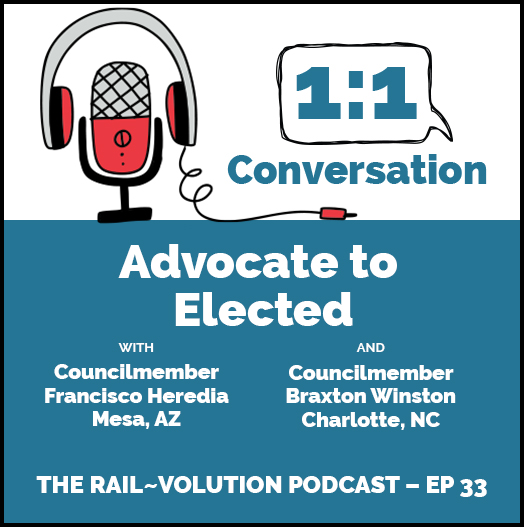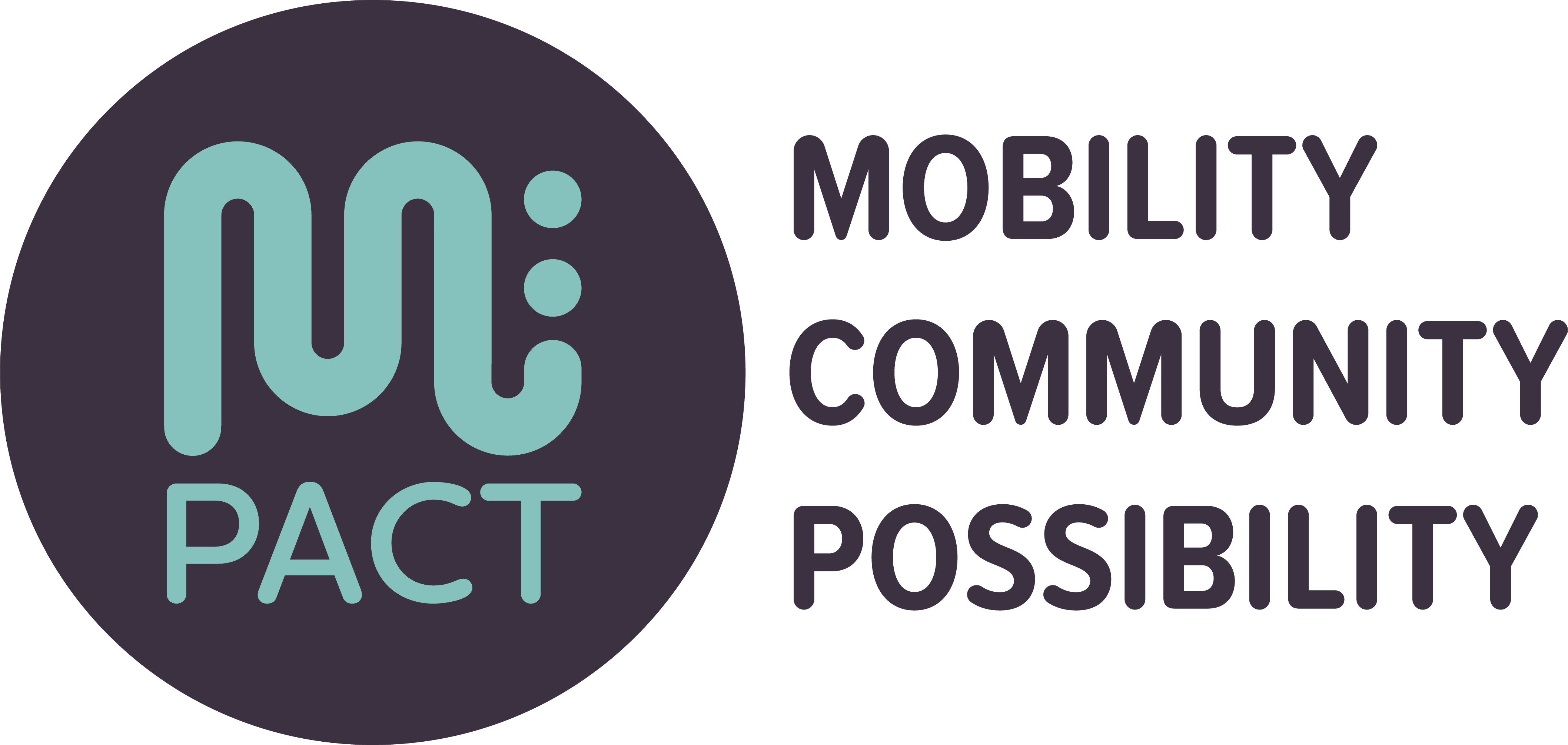Episode 33: Advocate to Elected: A 1:1 Conversation with Francisco Heredia and Braxton Winston
This Rail~Volution podcast introduces a new format we will use from time to time – of two guests speaking with each other. Let’s listen as Francisco Heredia a city council member in Mesa, AZ, and Braxton Winston, a city councilmember in Charlotte, NC, talk about their work as advocates and elected officials as well as their vision for transit in their communities.
Topics:
Tags:

“The light rail has had a positive effect in downtown in Phoenix, Tempe and Mesa, in bringing development to those cores that, as across the country, have seen a downturn based on market factors and online. But we have to be conscious about the type of development going forward. We are going to have to figure out a good balance in centering small business and working families that have lived in these areas.” – Francisco Heredia
“Transportation investment is the place where cities and municipalities really can have the most direct influence. . . . The corridors where these rails will be laid down are those neighborhoods that were cut off during urban renewal. Not only is it an opportunity but a duty to acknowledge and correct the errors of our policies of the past.” – Braxton Winston
In this conversation, councilmembers Heredia and Winston speak of what motivated them to run for council and how being on council, involved in issues from sidewalks to water, has shown the interconnected nature of infrastructure. Both are motivated by the opportunity for systemic change.
They each describe their cities- Charlotte as a wedge of wealth surrounded by a crescent of disinvested communities; Mesa as distinct east from west, with west Mesa seeing new life downtown as a result of light rail. They each talk about plans for transit expansion and the need to make the case for transit and multimodal connectivity at the regional level.
Heredia considers the challenge of recognizing the unsustainable cost of sprawling infrastructure, as well as how to leverage light rail lines to connect with other parts of the city via multiple other modes, such as BRT, autonomous vehicles, and neighborhood connectors. Winston speaks of efforts to introduce restorative policies in land use plans for new transit corridors – and the possibility of using transit investments to also address the digital divide. They both speak about how the pandemic is reinforcing the need to rethink past policies and, in Winston’s words, “to use transportation and transit to create not just seamless neighborhoods but seamless regions.”


